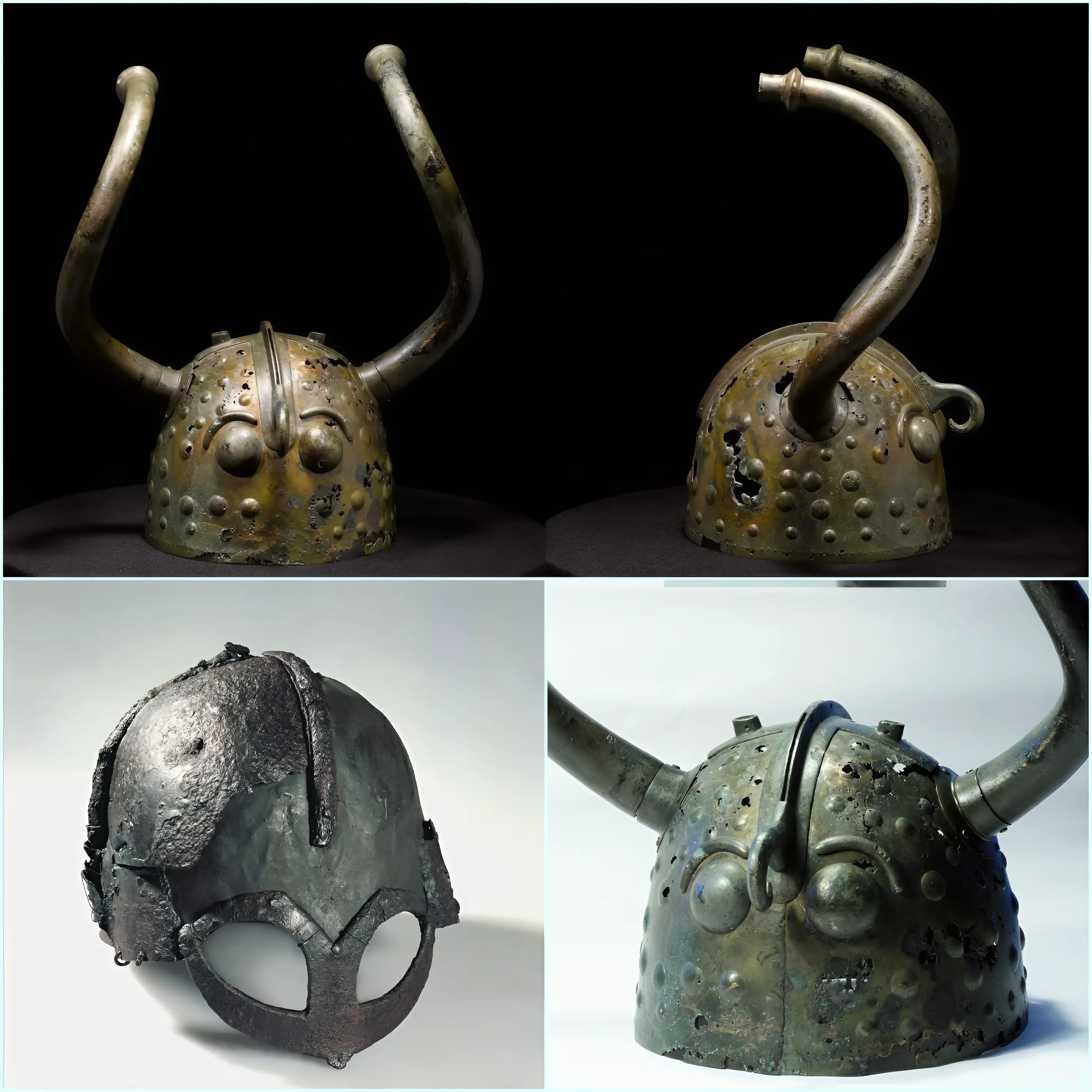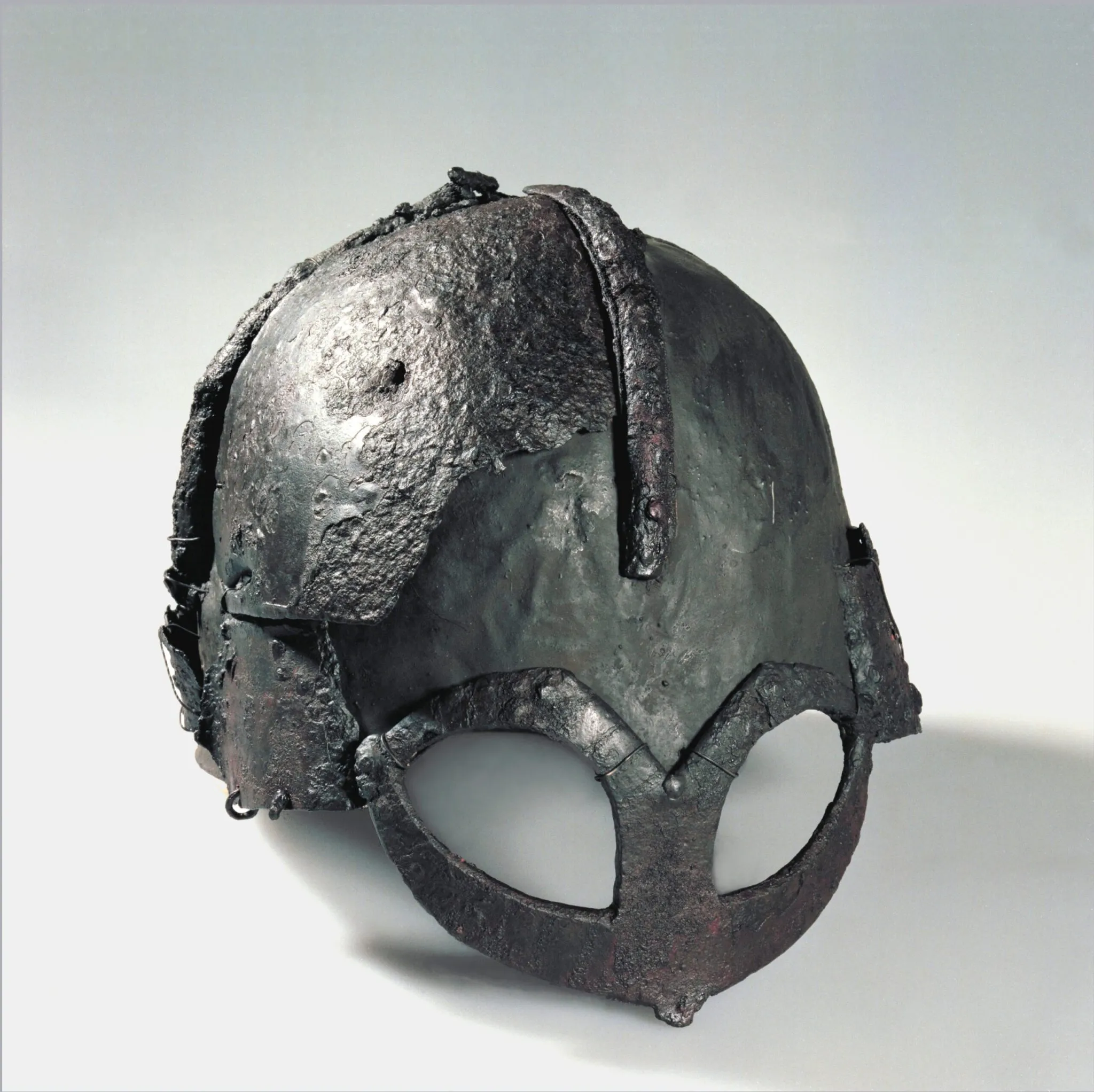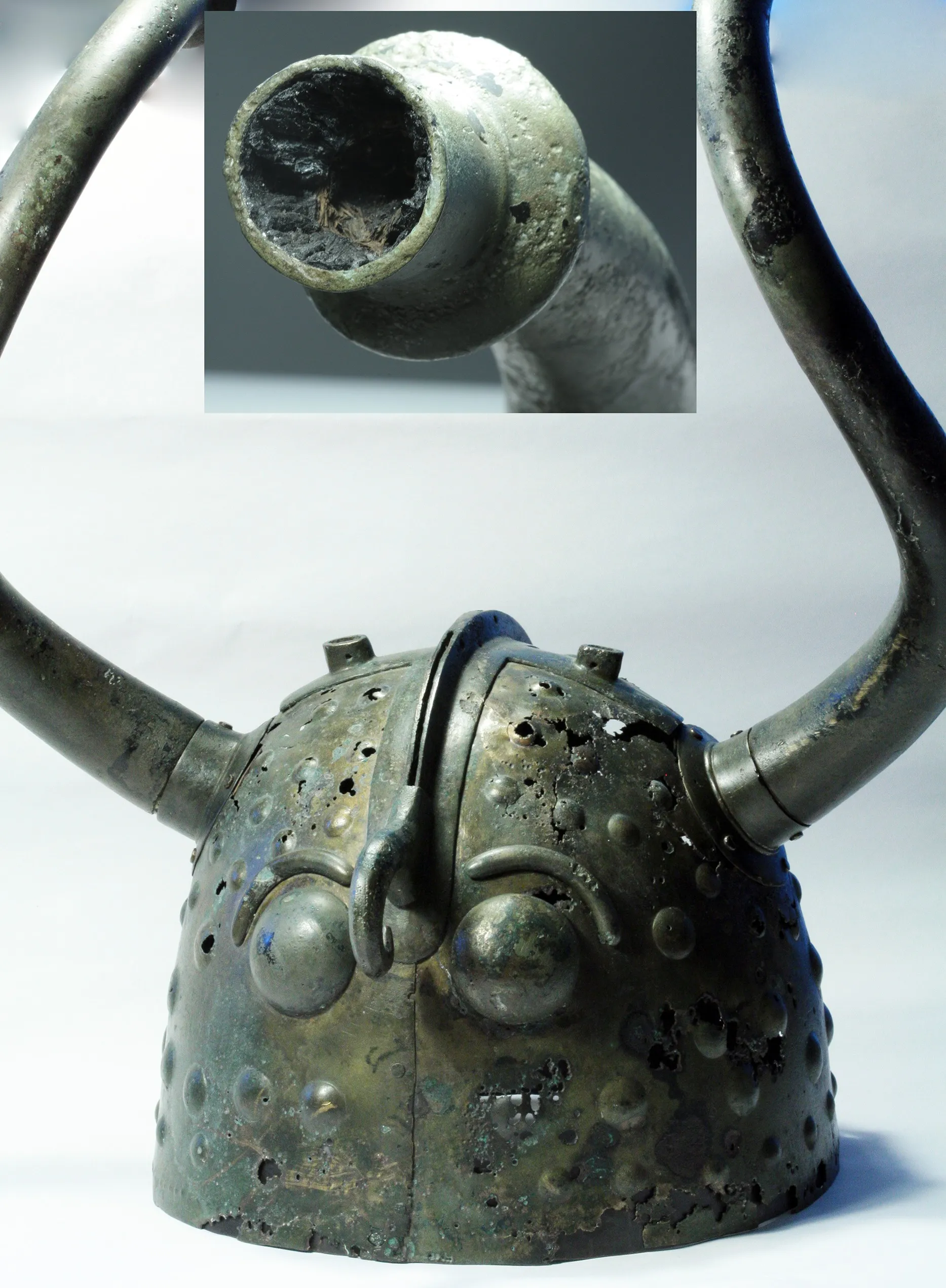Picture some Viking warriors. What are they wearing on their heads?


Most likely, a helmet. However, contrary to popular belief, Viking helmets did not have horns. One of the few complete Viking helmets ever discovered, unearthed at a Norwegian farm in the 1940s, confirms this—there are no horns.

The misconception that Viking helmets were adorned with horns is relatively modern. Historian Roberta Frank traces the origin of this myth to an 1876 German production of a Wagner opera. Within a few decades, horned helmets became synonymous with Vikings, despite historical evidence to the contrary.
Interestingly, horned helmets did exist in northern Europe long before the Viking Age, dating back over 2,000 years to the Bronze Age. Examples like the Viksø helmets, discovered in 1942 in a Danish peat bog near Copenhagen, are made of bronze with intricate bull-like horns. These helmets were likely ceremonial or symbolic rather than practical for battle, adorned with elaborate decorations including a beak, bulging eyes, and places for a crest of horsehair and feathers.
Recent research by Danish archaeologists involved scraping off a minute amount of organic glue used to secure the horns. Radiocarbon dating of this substance indicates that the helmets were last used around 950 BCE, shedding light on their ancient origins and their cultural significance long before the Vikings emerged.





